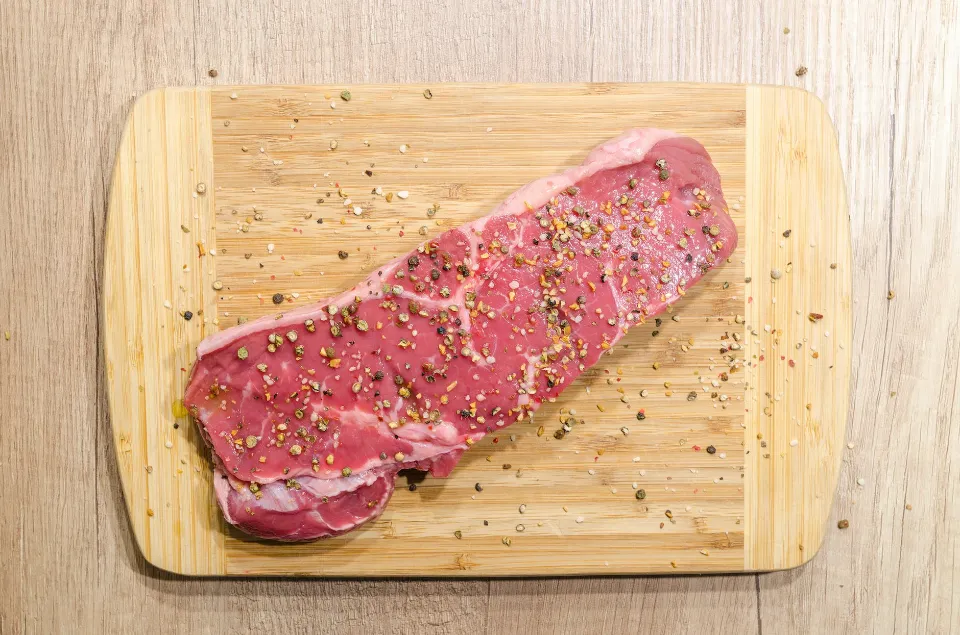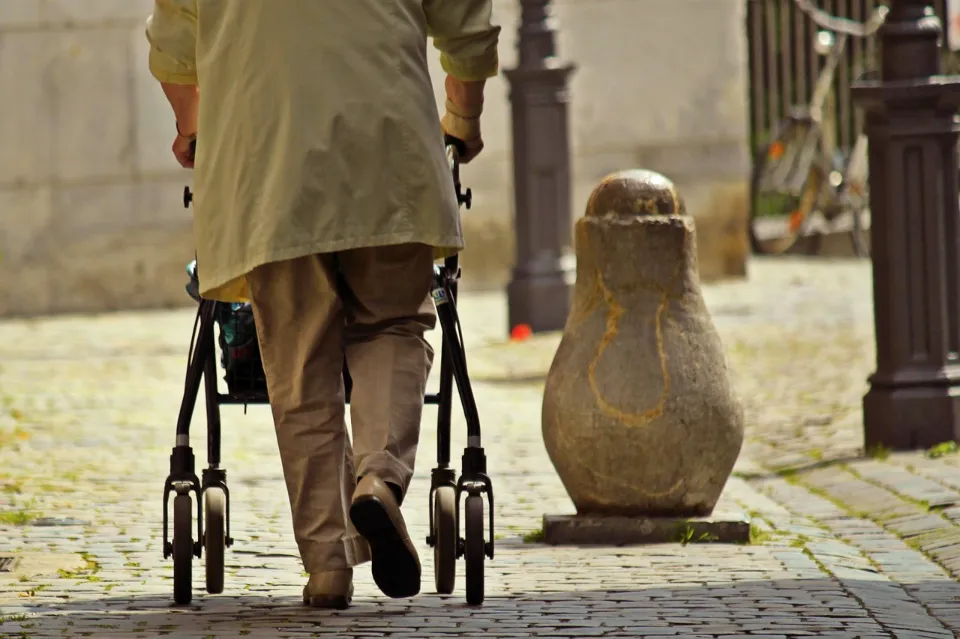Growing older for older adults entails more than just graying hair. A slower metabolism, pain in the bones and body, and—most concerningly—the loss of body muscle are all symptoms of aging. Losing muscle can result in a decrease in physical strength, which can then result in reduced or no physical activity and a higher risk of falls and injuries. As a result, maintaining and growing body muscle is essential, especially for older adults.
It’s an unfortunate reality of aging that people become more fragile. The weakness in their legs, which can occur when they walk too quickly or forcefully, is a major issue for older people. This makes it quite risky for them to fall and sustain injuries. Fortunately, there are strategies to help older people who experience leg weakness, and dietary changes are one of them.
Vegetables, fruits, meats, beans, and legumes are a few of the foods that seniors with weak legs can consume. Additionally, it’s critical for older adults with weak legs to regularly consume iron, vitamins, and carbohydrates.
This article will discuss the best foods that can help elderly build leg strength, improve their quality of life and prevent possible accidents.
Related: How to Stop Fluid Leaking from Legs: Causes&Treatments&Reminders – Elder VIP
Why Do the Elderly Have Weak Legs?
Interestingly, nutritional deficiencies are some of the most common causes of leg muscular weakness in all age groups. Vitamin D, magnesium, and calcium are all quite important for building bones and muscle tissue. Moreover, vitamin D deficiencies are exceedingly common among the elderly, and research has clarified that correcting that deficiency with supplements can help improve a person’s strength.
Another common nutritional deficiency that can contribute to weakness is iron, which is plentiful in poultry, dried beans, dried fruits, tofu, and cashews. Weak legs in seniors can also be related to poor circulation due to high cholesterol or other cardiovascular problems and low potassium as a result of taking diuretic medication. What else should you know besides nutrition?

It usually takes months or years for nutritional deficiencies and inactivity to cause weakness. However, similar to gradual weakness, there are a number of reasons why elderly people experience sudden leg weakness. One of the most frequent is a slipped disk, which frequently includes a tingling or burning sensation, pain that gets worse while sitting or standing, and generalized muscle weakness.
Another injury that commonly causes weak legs in elderly individuals is a pinched nerve. Usually affecting one side of the body, symptoms frequently involve leg, hip, and lower back pain. While those are among the most common causes of sudden leg weakness in the elderly, sudden weakness in the legs can also be caused by a stroke, and a laundry list of less common conditions like Parkinson’s, ALS, spinal tumors, Multiple Sclerosis, Guillain-Barre syndrome, peripheral neuropathy, and others.
What to Eat for Weak Legs in Elderly?
Milk
As adults, we frequently replace the milk we would have consumed as children with tea or coffee. Seniors are strongly advised to drink a glass of milk each day, though. Calcium and protein will promote bone health and muscle development. Turmeric can be added, and you can either have it hot or cold.
Fish
In case one is a non-vegetarian, seniors also have the option of consuming fatty fish, which features a significant amount of protein. One can choose from tuna, Indian carp, pomfret, salmon, mackerel, and hilsa. Additionally, you can prepare them in a variety of ways, including smoked, roasted, with fresh vegetables, or with gravy.
Another type of meat with a high protein content is fish meat. There should be a balance of fatty fish like salmon and tuna and lean, white fish with little to no fat.
Fish also contains fish oils, which have been shown to help reduce muscle weakness and soreness, two things that make elderly people’s legs weak.
Meat
Increased meat consumption is one of the most crucial dietary changes an elderly person with weak legs can make. Animal meat is a great protein source for seniors and is a healthy food choice. This can be in the form of lamb, mutton, and chicken. According to one’s preferences, these are readily available and can be eaten in a variety of local and international dishes. This is due to the fact that most meats contain 7 grams (0.25 oz) of protein per ounce, which helps to strengthen weak muscles and thus reduce leg weakness.
Meats also provide a high level of iron, which is a crucial mineral that maintains muscle mass and strengthens muscles at the same time. Additionally, iron helps older individuals with their risk of anemia, a condition that may result in weak and unsteady legs.

Eggs
For people of all ages, including seniors, this wonder food is a necessity. Readily available and economical, eggs include extremely beneficial fat-soluble vitamins and healthy fats. You have the option of eating them as your main course or in their most popular preparations, such as scrambled, boiled, and sunny side up.
Beans and Legumes
Legumes and beans are both high in iron and protein, and they have been shown to increase muscle strength. To see improvements in their muscle strength and ability, elderly people with weak legs should include beans in their diet.
The top 10 beans and legumes that are most beneficial are the following:
- Edamame beans
- Lima Beans
- Lentils
- Black Beans
- Large White Beans
- Cranberry Beans
- Split Peas
- Kidney Beans
- Navy Beans
- Pinto Beans
These are regarded as the healthiest because they are the most nutrient-dense and have the highest concentration of iron.
Fruits and Vegetables
Senior with weak legs should include more fruits and vegetables in their diet as well as other important food groups. The high levels of Vitamin C found in some fruits have been shown to help people over 50 maintain their muscle mass. These include the following:
- Guavas
- Oranges
- Kiwis
- Papayas
- Strawberries
- Lemons
Some fruits also have high iron content, which has been demonstrated to reduce muscle inflammation and strengthen bone and muscle.
Vegetables are equally important, as many such as spinach, chard, and broccoli also contain high levels of crucial iron. They also contain a high level of carbohydrates, which are a crucial food group and a lack of carbohydrates may be one reason for weak muscles in elderly people.
Protein Powders
Usually, as they age, their appetites decline, causing them to eat less. Drinking protein shakes made from protein powders can be a wholesome substitute for this. You can opt for a protein powder of your choice post-consultation with your dietitian or doctor.
Exercises for Weak Legs in Elderly
Age-related muscle loss is common, but a sedentary lifestyle can hasten the process. Conversely, regular leg exercises can improve balance and potentially reduce the risk of suffering a fall. The good news is that finding effective exercises for weak legs in elderly people is typically not that difficult, although mobility restrictions must be taken into account and you should consult your doctor about appropriate exercise for your loved one.
For example, ankle circles are a low-impact exercise that can be performed while sitting by simply lifting one leg and rotating the ankle in a circular motion. Likewise, leg raises and calf exercises can be done standing beside a chair for safety, and squats are also an excellent option for many people. Most experts suggest low-impact strength training twice per week, but it’s worth keeping in mind that it can take older adults a long time to see fitness results.
Final Thoughts
The body changes as we age in many different ways. Age-related changes in our bodies typically include diminished body muscle, a slower metabolism, and decreased appetite. To help elderly develop powerful weak leg muscles, you must therefore make sure that your diet includes the necessary components. For older adults to maintain their overall health and a healthy lifestyle, a muscle-building diet is crucial.
FAQs
What Vitamin Should I Take for Weak Legs?
Lack of vitamin B1 can result in fatigue, muscle cramps, heavy and tired legs after exercise, and strange feelings in your feet and legs. Some foods rich in vitamin B1 include whole grains, vegetables, legumes, milk products, and meat.
What Are Weak Legs a Symptom Of?
Leg weakness can result from sciatica, spine conditions, neuromuscular disease, and certain medications. A stroke may be the cause of unexpected leg weakness. Any sudden muscle weakness should be reported to 911, especially if it comes along with facial drooping, a severe headache, or slurred speech.



